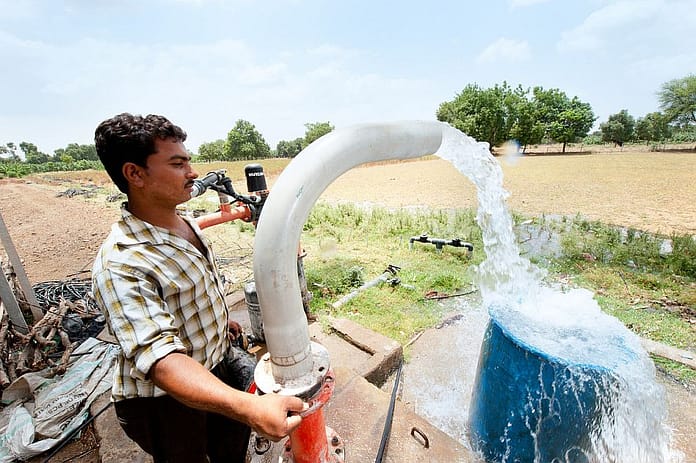Storing water could help rural communities in Nepal, if socioeconomic factors are addressed
The report states that interventions should involve marginalized groups, particularly young men in addition to women and the elderly, and build upon local networks. They should also match the scale of the storage system with the particular water needs of the individual and community, and integrate storage development into larger watershed management programs.
The majority of rainfall in Nepal (around 85%) occurs during the monsoon from June to September. This often leads to issues of too much water or not enough. As scientists predict a growing trend of climate variability, water storage systems could lessen flood risks and support water availability in the dry season.
Capturing and storing water in small ponds and tanks can help farmers and communities adapt to unpredictable rainfall patterns. However, we need to look at the whole picture to really make a difference in food production and to people’s livelihoods. We must understand the social, political and economic factors which influence how well these systems work, said Fraser Sugden, a researcher at IWMI.

According to the report, interest in agriculture is declining in Nepal, as it is often perceived as risky and unprofitable. As people have left in pursuit of more stable employment opportunities, this outlook has significantly impacted the attitudes and aspirations of youth, especially young men. With plans to leave, few have incentives to participate in water management or learn new agricultural skills. Involving these youth in water and land decision making, and supporting innovations to increase incomes, could help to encourage them to pursue livelihoods in agriculture and sustainably manage natural resources.
A farmer from Foksu, Nepal, told IWMI researchers, “The younger generations are forgetting that . . . [they] can continue with agriculture [after getting an education]; we need people with new skills and technology in the agriculture field.”
With this current trend of out-migration, the face of agriculture and gender roles are changing. According to the report, women often remain on the farms and share a larger burden of the labor, but few play an active role in the management and maintenance of irrigation systems and water storage units as this has traditionally been left to men. Women will need to become more involved as the primary food producers and overseers of agricultural production. Other marginalized groups, such as the elderly, should be included in these community decisions as well.
Hill communities in Nepal have a long history of collective action in labor and maintenance of irrigation infrastructure. Interventions should also recognize and build upon the local, informal systems. There may still be a need to formalize rules and responsibilities in some contexts, but working with these structures can save time and create buy-in from the community.
The appropriate type and size of a water storage unit varies by community. A large-scale storage unit may be beneficial if a strong, indigenous institution can manage it and plan for long-term monitoring and evaluation. However, women overseeing small-scale vegetable production may only need small plastic ponds for irrigation, which are cheaper and easier to maintain with limited resources. According to the report, it is important to understand what type of unit is suitable to the user’s needs and their ability to maintain it.
Small-scale storage development should also coincide with watershed management. In the Indrawati and Pankhu subbasins of central and eastern Nepal, climate change is significantly altering the spatial and temporal availability of water. Large-scale initiatives to improve land cover and groundwater renewal can help to ensure enough water will be available into the future.
“The storage structure has to be seen as a part of a larger landscape which includes springs, streams, forests, agriculture and people. Therefore, the management of these interventions needs to consider the whole biophysical and socioeconomic landscape,” said Luna Bharati, a senior researcher at IWMI.
The report indicates that community members generally have a positive outlook on the potential to increase crop production and family incomes through water storage systems. With new approaches to engage a wider range of water users and understand local contexts, expansion of this technology and its benefits is possible.
Read the research report:
Sugden, F.; Shrestha, L.; Bharati, L.; Gurung, P.; Maharjan, L.; Janmaat, J.; Price, J. I.; Sherpa, T. Y. C.; Bhattarai, U.; Koirala, S.; Timilsina, B. 2014. Climate change, out-migration and agrarian stress: the potential for upscaling small-scale water storage in Nepal. Colombo, Sri Lanka: International Water Management Institute (IWMI). 38p. (IWMI Research Report 159).
Fraser Sugden is a Researcher – Social Science at the International Water Management Institute (IWMI), Kathmandu, Nepal.
Luna Bharati is a Senior Researcher – Hydrology and Water Resources, and Head of Office at the International Water Management Institute (IWMI), Kathmandu, Nepal.
















